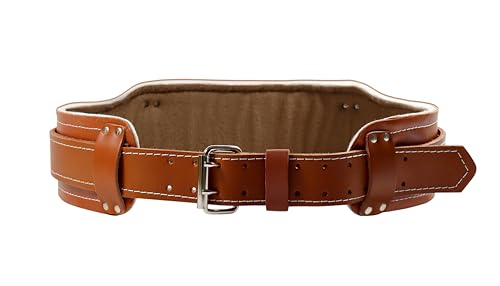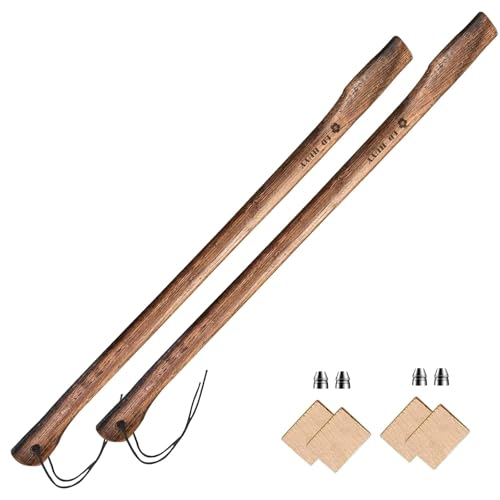


The hand axe is one of the most ancient tools ever discovered, dating back to the Early Stone Age. It was an essential tool for early humans and played a critical role in their survival and development. But who exactly invented this versatile tool that has stood the test of time?
While it is impossible to pinpoint the exact individual or group of people who first invented the hand axe, archaeological evidence suggests that it was developed by early hominids over 1.5 million years ago. These early humans used the hand axe for a wide range of purposes, including hunting, food preparation, and woodworking.
The invention of the hand axe was a significant technological advancement for early humans. By shaping a stone into a sharp cutting edge, they were able to perform tasks more efficiently and effectively. The hand axe revolutionized early human societies, enabling them to adapt to different environments and improve their chances of survival.
Although the specific inventor of the hand axe remains a mystery, its importance cannot be overstated. The hand axe represents a crucial milestone in human history, marking the beginning of our species’ ability to shape and manipulate the materials around us. It is a testament to our ancestors’ ingenuity and resourcefulness, and a reminder of how far we have come as a species.
The origins of the hand axe
The hand axe is one of the oldest known tools used by early humans. It has a symmetrical shape, with a sharp edge on both sides and a rounded base. The origins of the hand axe can be traced back to the Lower Paleolithic period, around 1.5 million years ago.
It is believed that the hand axe was invented by Homo ergaster, an early human ancestor who lived in Africa. These early humans used the hand axe for a variety of purposes, including hunting, butchering animals, and cutting and shaping wood and other materials.
The hand axe was made by carefully chipping away flakes from a stone to create a sharp, symmetrical edge. This required a significant amount of skill and knowledge. The stone used to make hand axes varied depending on the region, but commonly used materials included flint, chert, and obsidian.
The invention of the hand axe was a major technological advancement for early humans. It allowed them to perform tasks more efficiently, such as cutting meat and processing plant materials. The hand axe also provided early humans with a means of defense against predators.
Over time, the design and craftsmanship of hand axes evolved. They became more refined and specialized for specific purposes. Different shapes and sizes of hand axes emerged, depending on the intended use.
The hand axe continued to be used by early humans for hundreds of thousands of years, until it was eventually replaced by more advanced tools, such as the stone knife and later the metal axe. However, the hand axe remains an important artifact in understanding the capabilities and innovation of our early human ancestors.
The first use of the hand axe
The hand axe is one of the oldest known tools used by early humans. It was first discovered in Africa and dates back thousands of years. This versatile tool was used for various purposes, including cutting, chopping, and scraping.
Early humans used the hand axe for a variety of tasks, such as hunting, processing food, and building shelters. Its sharp cutting edge allowed them to efficiently butcher animals and shape wood for various purposes. The hand axe became an essential tool in their daily lives, aiding in their survival and advancement.
Evolution and design
Over time, the hand axe evolved in design and functionality. Early versions were made from sharp-edged stones such as flint, which were chipped and shaped to form a cutting edge. Later, humans started using other materials like bone or antlers to create handles, improving the grip and making the tool easier to use.
The shape of the hand axe also evolved, with specific designs developed for different tasks. For example, hand axes used for hunting had a more pointed tip for piercing hides and animal flesh, while those used for woodworking had a broader blade for better control and precision.
Cultural significance
The hand axe not only revolutionized early human technology but also played a significant role in shaping their culture. It was a tool that required skill and knowledge to create and use effectively. The ability to fashion a hand axe demonstrated intelligence, problem-solving abilities, and manual dexterity, which likely played a crucial role in social interactions and mate selection.
Furthermore, the hand axe’s versatility and effectiveness made it a valuable resource for early human communities. The tool allowed them to access more resources, process food more efficiently, and create more sophisticated hunting strategies. This, in turn, could have led to the development of complex social structures and the growth of human civilization.
Early pioneers in hand axe development
The development of the hand axe, a versatile stone cutting tool that was used by early humans for various purposes, can be credited to several ancient civilizations and cultures. These early pioneers played a crucial role in refining the design and functionality of the hand axe, ultimately leading to its widespread use.
Acheulean Culture
One of the earliest known cultures to have extensively utilized hand axes is the Acheulean culture, which existed in Africa and parts of Europe and Asia between 1.76 million and 100,000 years ago. The hand axes created by the Acheuleans were characterized by their symmetrical shape, sharp edges, and pointed ends. They were primarily made from hard rocks such as flint and quartzite, and were used for various activities, including cutting, digging, and butchering.
Mousterian Tradition
During the Middle Paleolithic period, the Mousterian tradition emerged in Europe and lasted from around 160,000 to 40,000 years ago. This culture saw further advancements in hand axe technology, with hand axes becoming more refined and specialized. The Mousterian hand axes were often made using flint and were known for their distinctive triangular shape and retouched edges. These axes were used by Neanderthals and early modern humans for activities such as hunting, woodworking, and crafting.
The pioneering work of cultures like the Acheulean and Mousterian contributed significantly to the development and evolution of the hand axe, making it one of the most important tools in human history. The hand axe played a crucial role in early human survival, enabling them to carry out a variety of tasks with greater efficiency and precision, ultimately shaping the course of human civilization.
Renowned inventors of the hand axe
The hand axe is a fascinating tool that has been used by humans for thousands of years. Over time, different cultures and civilizations have contributed to the development and evolution of the hand axe. Here are three renowned inventors who played a significant role in the invention of the hand axe:
1. Homo ergaster
Homo ergaster, also known as African Homo erectus, is believed to be one of the first human ancestors to invent and use the hand axe. This early human species appeared around 1.9 million years ago and was known for its advanced stone tool technology. Homo ergaster used the hand axe for various purposes, including hunting, butchering, and woodworking.
2. Neanderthals
Neanderthals were a subspecies of humans who lived in Eurasia from around 400,000 to 40,000 years ago. They were skilled toolmakers and used the hand axe extensively. Neanderthals created hand axes by carefully chipping away at stone to create a sharp edge. These hand axes were multipurpose tools used for cutting, scraping, and even as weapons during hunting.
3. Homo sapiens
Homo sapiens, or modern humans, appeared around 300,000 years ago and continue to exist today. They have been using hand axes throughout their history for various purposes. Homo sapiens refined the design of the hand axe, making it more efficient and versatile. This innovation allowed them to undertake complex tasks such as building structures and crafting intricate tools.
The hand axe, invented by these renowned inventors, played a crucial role in the survival and progress of early human species. It served as a fundamental tool that enabled humans to adapt to their environment, fulfill their needs, and shape their future.
| Inventor | Species | Time Period |
|---|---|---|
| Homo ergaster | African Homo erectus | 1.9 million years ago |
| Neanderthals | Subspecies of Homo sapiens | Around 400,000 to 40,000 years ago |
| Homo sapiens | Modern humans | Around 300,000 years ago to present |
Legacy and Impact of the Hand Axe
The invention of the hand axe marked a significant milestone in human history. Its creation and utilization by early humans transformed the way they hunted, gathered, and interacted with their environment. The legacy of the hand axe can still be observed in various aspects today.
1. Survival Tool
The hand axe served as a versatile survival tool for early humans. Its sharp edge allowed for effective cutting and butchering of animals for food, as well as the processing of various plant materials. This enabled early humans to more efficiently obtain resources for their sustenance, giving them an advantage in the struggle for survival.
The hand axe revolutionized early human hunting and gathering practices, enhancing their ability to gather food and resources.
2. Cultural Significance
The hand axe not only influenced early humans in terms of survival but also had cultural significance. The craftsmanship and skill required to create a hand axe reflected the level of sophistication and intelligence of early human societies. Hand axes were not only utilitarian tools but also objects of value and status, possibly representing skill and prowess.
The hand axe was not only a practical tool but also a symbol of human ingenuity and cultural identity.
The impact of the hand axe can also be seen in the evolutionary development of early humans. The use of tools, such as the hand axe, played a crucial role in shaping the human brain and hand-eye coordination, enabling the continued development and advancement of human civilization.
In conclusion, the hand axe played a significant role in the survival, culture, and evolution of early humans. Its legacy can still be observed in our modern-day tools and technologies, underscoring its lasting impact on human history.







